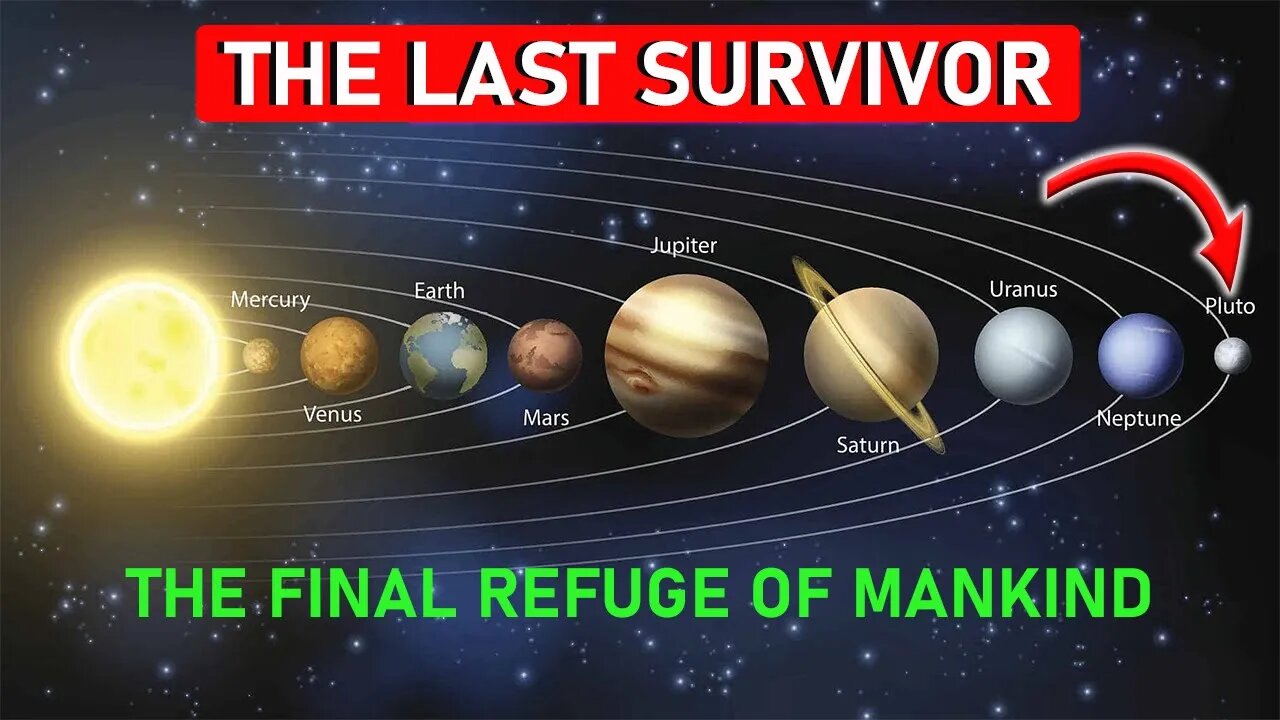Premium Only Content

Will Pluto be the final habitable planet when the Sun transforms into a red giant? | zeey
#Pluto#DwarfPlanet#Astronomy
The death of the sun: a terrible and unavoidable conclusion. today, we know that the sun will not shine forever since its fuel, hydrogen, will run out in roughly 5,000 million years; when this happens, the sun's gravity will compress the core, heating it enough to initiate helium fusion in a layer around the nucleus. this shell will expand, causing the star to enlarge and cool, eventually transforming it into a red giant. the sun will lose much of its mass during this phase due to stellar wind, which will strengthen as the star expands. finally, after around 5 billion years, the sun will shed its outer envelope, generating a planetary nebula that will spread throughout the solar system. finally, in the last stage, the sun's core will be entirely exposed, becoming a white dwarf star that will gradually cool over billions of years
The end of everything. The Sun will become huge enough to engulf the inner planets, including Mercury, Venus, and possibly Earth, during the red giant phase. However, the Sun's expansion can lead the Earth to travel far enough away to avoid being devoured. Even if Earth and Mars survive, they will become scorched and barren worlds. These planets' oceans and atmospheres will boil and lose any water they may have stored. They will transition from habitable planets to scorched and airless worlds like Mercury.
Humanity's last sanctuary. Pluto's story is a little different from the rest. this icy globe is 39 times further from the sun than earth; this distance is immense; as a result, the sun's temperatures will effect Pluto far less than the other planets. Pluto is covered in frozen solid water, solid carbon monoxide, solid nitrogen, and solid methane in today's solar system, all at 43 kelvin (-230 Celsius). when the sun is at its brightest, Pluto may heat up to 300 kelvin (27 Celsius), which is a suitable and pleasant temperature for living organisms. between the freezing and boiling temperatures of water (assuming a dense environment), the journey to that peak could take millions of years. of course, as a frozen item warms up, it loses a significant amount of sublimated material to the vacuum of space. water, carbon monoxide, and other gasses on the surface will simply evaporate. even a dwarf planet with a gravitational pull as low as Pluto (roughly one-twelfth that of earth) could maintain an atmosphere thick enough to protect humans from radiation from space. in other words, if the sun becomes a red giant and all of the planets become inhospitable, Pluto may have a thicker envelope and potentially far more favorable conditions for life, becoming humanity's last refuge.
#SolarSystem#SpaceExploration#NASA#PlutoFacts#KuiperBelt#NewHorizons (NASA mission to Pluto)#PlutoDiscovery#Planetoid#OuterSpace#CelestialBody#Science#AstronomyFacts#PlutoMission#PlutoImages#SpaceScience#Pluto#DwarfPlanet#Astroomy#PlutoResearch#PlanetaryScience
-
 1:31:18
1:31:18
Redacted News
7 hours agoEMERGENCY! NATO AND CIA ASSASSINATE TOP RUSSIAN GENERAL, PUTIN VOWS IMMEDIATE RETALIATION | Redacted
197K324 -
 56:45
56:45
VSiNLive
6 hours ago $5.02 earnedFollow the Money with Mitch Moss & Pauly Howard | Hour 1
59.2K2 -
 52:44
52:44
Candace Show Podcast
6 hours agoMy Conversation with Only Fans Model Lilly Phillips | Candace Ep 122
73.9K258 -
 LIVE
LIVE
tacetmort3m
7 hours ago🔴 LIVE - RELIC HUNTING CONTINUES - INDIANA JONES AND THE GREAT CIRCLE - PART 5
197 watching -
 26:52
26:52
Silver Dragons
5 hours agoCoin Appraisal GONE WRONG - Can I Finally Fool the Coin Experts?
27.7K2 -
 UPCOMING
UPCOMING
Bare Knuckle Fighting Championship
11 hours agoBKFC on DAZN HOLLYWOOD WARREN vs RICHMAN WEIGH IN
19.3K -
 6:49:16
6:49:16
StoneMountain64
9 hours agoNew PISTOL meta is here?
31.2K1 -
 20:58
20:58
Goose Pimples
11 hours ago7 Ghost Videos SO SCARY You’ll Want a Priest on Speed Dial
17.8K3 -
 2:24:59
2:24:59
The Nerd Realm
9 hours ago $2.78 earnedHollow Knight Voidheart Edition #09 | Nerd Realm Playthrough
35K2 -
 1:21:14
1:21:14
Awaken With JP
11 hours agoDrones are for Dummies - LIES Ep 70
117K58